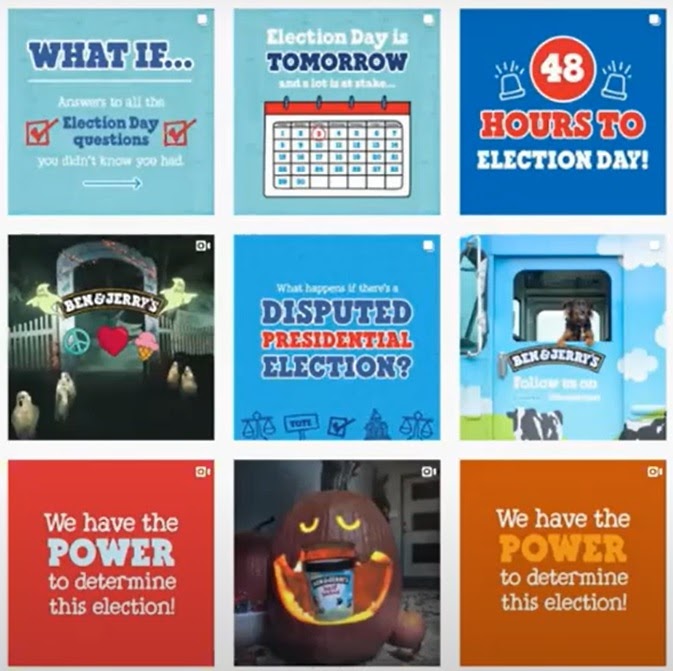

Since 2020, we’ve all had time to think about what’s really important to us. For most, our thoughts turned to our family and friends. Others learned to take better care of ourselves both physically and mentally. Many of us even committed to change past unsustainable habits when life ‘reopens’.
In fact, Accenture’s recent report on global consumer habits found that 61% of people are focused on changing their consumer habits since lockdown. It also shows that 89% of people will hold a company’s values to account – marking business transparency, environmental impact, and upholding ethics among the highest factors in purchase decisions.
And it’s not just consumers. 85% of investors are reevaluating their investments in companies that don’t take environmental impact seriously. So, how will these changing behaviours affect brands over the coming years? And how should brands respond?
There has always been a disconnect between the consumer’s passion for sustainability, and their long-standing commercial habits. Of the 10,000 people surveyed by Getty Images, 92% said they recognise that they have a direct impact on the future of the environment. However, nearly half said convenience still takes priority over environmentally conscious purchases.
As a result, brands are faced with a tide of consumers wanting to make an active difference – but many have not yet been inspired to take the first step. With digital consumption at an all-time high, and a growing global shop window, I think the way in which brands communicate with their consumers – and the content they create – matters more than ever.
At Raw London, we believe that if you want people to behave differently, first you need to change what they know, think, or understand. Learning something new, getting a fresh perspective, and seeing the world through someone else’s eyes are the seeds that grow into behavioural change.
Inspiring creative, content, and advertising are all powerful tools for achieving this. So, I’ve put together some ideas for brands looking to inspire the consumer, or attract fresh and ever-mindful investors.
Every brand dreams of creating the next Cadbury’s Gorilla or Compare the Meerkat moment. However, it’s worth remembering that people look to real-life experiences and stories to guide their own decision-making too. Whether you use this directly on-screen, as a basis to a script, or even as insight for your final concept – finding real, relevant stories can be gold dust.
For example, Patagonia‘s latest films, We the Power, promote their very real mission to tackle large energy companies. It uses real stories and real people to tackle real problems – achieving instant, meaningful engagement.
If you want to keep audiences engaged (and attract new ones) your content has to be relevant. Investing in research and testing can be critical in discovering what matters to your audiences, and how your brand fits in. For example, for some brands that means being part of everyday conversations to stay front of mind and connected to causes audiences care about.
Ben and Jerry’s do this well. Whilst displaying no obvious bias, they often share on-brand content that highlights social, political and topical news relevant to their audiences, as well as their own cause-led brand.

Everyone loves nice feedback. However, sometimes there’s value in listening, responding and acting on negative feedback too. This openness can build trust with your audiences, and even help you uncover different, unusual or surprising real stories and perspectives.
In contrast, some brands can seem to live behind closed doors. Not only do they not talk about what they’re doing, but they don’t listen to their audiences. Engagement goes both ways – so while a brands voice is important, so too is its ability to listen, acknowledge and change.
Many brands are still seeing the value of TV advertising, and are increasingly using it to communicate purpose. In fact, according to Thinkbox’s TV in Review, broadcaster TV advertising accounted for 91% of all video advertising in 2020 – of which 77% was for 16-34 year olds.
It’s no surprise, really. With everyone at home in 2020, TV could uniquely capture audience from all ages, social and economic groups. But it’s important to remember that TV shouldn’t stand alone. Think digital and social of course – but also consider the rise of gaming platforms, live streaming, BVOD – even Out-Of-Home (OOH) will likely make a come back as lockdown eases.
For example, take a page from Brewdog’s book. With no TV advert since 2019, they rule at OOH campaigning, global event hosting, and promoting carbon neutrality on social media.

Finally, you may have noticed that these examples are connected. Not only is their content driving behavioural change but, as certified B Corporations, they have the goods to back it up.
With more businesses signed up than ever, it’s clear it’s not just a marketing tool. Instead, it’s proof that balancing your business purpose with profit is a growing movement – and of the belief among brands in inspiring the ‘conscious consumer’.
Because what you say and how you say it matters.